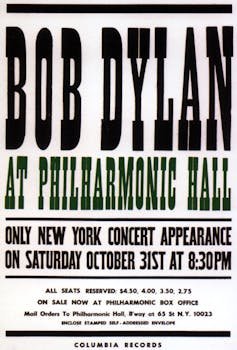The new Frida Kahlo documentary by Carla Gutiérrez takes a deep dive into the iconic artist’s legacy with interesting results.
“The only thing I know is that I paint because I need to.”

A still from Frida, the new documentary on Frida Kahlo
The new documentary directed by Carla Gutiérrez wants to revisit her life story through her own words – and emerges quite successful at it. After premiering at the Sundance Film Festival, Frida- which now releases on Prime Video, is a vibrant and innovative departure, one that is more or less able to capture the artist’s spirit and shifting perspective with the world.
Revisiting a real-life story
The key here is the proximity to the subject. Carla explores Frida’s history through archival footage, which includes pictures, videos and diary entries, combined with transcripts of interviews of people close to her. Voice actor Fernanda Echevarria Del Rivero eloquently brings her unvarnished and spirited side alive. With the help of these elements, Frida paints an illuminating portrait of her story through her own words – which injects new life into her experiences, fears, and defiance as a creative person, always in sync with her artistic integrity.
As a nonfiction portrait, Frida takes quite a few innovative turns. Even as so much of her life is documented, the film provides space for perspective from the people who were present in her circuit, including her painter-husband Diego Rivera. Art and revolution, they overlap and intersect in her legacy – where there is interplay between the black-and-white footage with the colours that embellished Frida’s art. Perhaps the most daring turn comes in the decision to add movement in the painting of Frida’s work.
Although the animation by Sofía Inés Cázares and Renata Galindo is quietly nurturing towards the conversation around Frida’s life in post-Revolution Mexico, there is something inherently wrong with adding movement to the imagery that is already so powerful and tremendous. A special shoutout to Víctor Hernández Stumpfhauser’s rousing score, adding layers of depth and texture to the palette.
Final thoughts
There’s value and complexity in Frida, and anyone who possesses an affinity towards art will devour it, but I cannot help but wonder why the film doesn’t explore more about politics as well as her art, and how both these aspects were interlinked in her legacy. Perhaps the biggest concern is that Gutiérrez deals with Frida’s story in chronological fashion – where there is little space for that contradictory indulgence that makes her art so arresting in the first place.
One wonders whether Frida Kahlo would have disliked the intervention into her life and work that is at play here. She most possibly would. She would’ve turned a side eye at the way this film hangs in quietly around her romances, among other things. But there’s still something unexpectedly definitive about Carla’s work that makes it stand out. Yes, the emphasis shifts and some of the choices do not land as intended, but there’s an urgency and space for dialogue that makes Frida undeniable. Seek it out.
Conversation with Gutierrez
What is your personal connection to Frida Kahlo and her work?
Carla Gutierrez: I connected with her first when I was in college. I saw this painting of hers, where she’s between the United States and Mexico in this beautiful pink dress. I was a very new immigrant at the time, [and] I completely connected to the painting. I thought, Who is this artist that’s painting me and my experience in the United States? That’s how I started to learn about her.
Frida Kahlo has posthumously been the subject of many documentaries, books, et cetera. What, in your view, has been missing from the public’s understanding of her?
When I first started looking into telling her story, I went back to the books that I read when I was in college. As I revisited that material, I realized that her voice was really everywhere. She had spoken in a very open way in letters, and especially in her diary, about really significant moments in her life. And that’s when I realized that there was a way into the story that I hadn’t seen in film before. What we tried to offer [viewers] was knowledge of the texture of her personality and emotions.
Tell me about what inspired you to re-imagine the ethos behind Frida’s work through animation.
Animation was a concept that we had really early on. Coming up with the approach for the film, there were two things on our mind: how we’re going to use her voice to get as close [as possible] to really hearing her thoughts and emotions, and how can we visually jump into her heart and swim into her internal world. I really wanted to use her art because it’s so tightly connected to her lived experiences. They’re very fantastical; some people call them surreal. But at the same time, there are a lot of literal details in her paintings about specific things that happened to her. I wanted to connect that internal world she pours into her canvas with the cinematic story we’re telling, and for me, animation was the way to do it from the very beginning.
I love that your animation team was predominantly Mexican and female. Tell me about the collaboration process, and some of the considerations you made while taking on Frida’s story.
My animation team is truly amazing. From the very beginning, it was very important for me to have Mexican collaborators involved in the project. We started looking for companies in Mexico to collaborate with [on] our animation, and we ended up connecting with a few people on Instagram. We were kind of blown away by their work. Renata Galindo and Sofía Inés Cázares were our incredible animation leads, and they quickly became involved in every aspect of the creative process. The collaboration was very special. This was my first time doing this type of heavy animation, and I couldn’t have asked for a better team.
During your exploration of Frida’s letters, writings, and interviews, what did you find most surprising?
It was really interesting to learn about Mexico’s relationship with Frida. In Mexico, or at least in conversations we had with the animators, it felt very much like Frida is still just thought of as Diego [Rivera]’s wife—Diego was the big deal. Diego is still the big artist and Frida is this really interesting figure that has captured the imagination of the world. Our Mexican collaborators were learning as we were learning through the research.
What aspects of Frida’s life and personality were you most excited to introduce to viewers, especially those who aren’t as familiar with her?
Her descriptions of white Americans [laughs]. A lot of people know her as a woman that had to face a lot of suffering and heartache. But I think a lot of people don’t know how sarcastic she was and what a sharp tongue she had. I had a really good time digging into her personality and being able to express that in the film.
The other thing that I really wanted to share was the letter where she talks in detail about her decision to either abort her pregnancy or not. I remember when I read that letter, she seemed so fragile, like so many of us are when facing a difficult life decision. [Kahlo] was thinking about how the pregnancy would affect her relationship [and] thinking about her health. She was scared about the American doctors, because abortion was illegal here, and what they were telling her and the recommendations that they were giving her…it was this cocktail of messiness, fear, and fragility that was incredibly raw for me to read. I really wanted to show her as a real woman dealing with a very traditional marriage and dealing with all the questions a lot of us have throughout our lives. They’re important questions to talk about.
I know that you connected with members of the Kahlo family while makingFrida. Tell me about how their participation shaped the documentary and your creative process.
We had the pleasure and the honor of connecting with two family members: Cristina and Billy Kahlo, who were the daughter and son of Guillermo Kahlo, who was the son of Frida’s sister. The interesting thing is that Frida’s father was a photographer, and his grandson [Guillermo] is also a photographer. There’s something about the family genes that creates artists.
Cristina Kahlo is also an amazing photographer, but she’s been focused on taking the time to really study what happened to Frida in a physical way, like how her body made her who she was. As a family member, she was able to go to the hospital where Frida had a lot of surgeries. We got access to a lot of previous physical records of Frida’s thanks to Cristina. And Cristina had help. Many museums around the world have curated exhibitions that actually deal with Frida’s body. Cristina became a consultant in the film and it was really special to sit with her and Frida’s family.
In my opinion, part of what makes Frida special is its exploration of Kahlo’s sexuality. Why was it important to you to capture that part of who she was?
Frida never really talks about her queerness, she just lives it. She had a need to be loved, not only by Diego, but other people. [Frida] craved that connection, and she sought after that pleasure and desire. We saw it in her letters, and we see it in the art. She was very, very public about it, but not in a way that was, like, trying to be public about it for shock value. I love that about Frida, and we really wanted to defend that. And I think that that’s one of the reasons why she’s become such an important feminist symbol and queer symbol for all of us. She just exuded love. We didn’t want to just list her lovers—we wanted to give life to this desire and have the audience feel it.
What do you want viewers to take away from Frida?
Going back to my first experience with Frida, being able to see my emotions reflected in a painting and seeing a woman that could not keep her voice quiet and threw all her feelings out to her paintings was life-changing. That takes courage. And she did it in such an honest and raw way. I hope that inspires people. I hope they see that talking about your most intimate feelings and letting them out is cathartic, and we all need an opportunity to do so.










